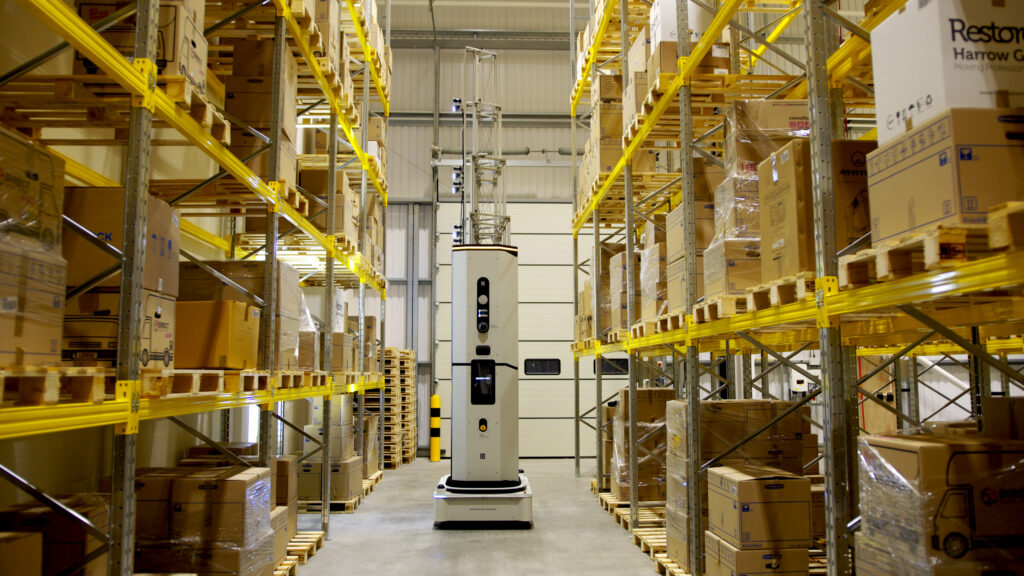AI and IoT are Redefining the future of Supply Chains
7th June 2024

AI and IoT are redefining the future of supply chains and revolutionising logistics, writes Adrian Negoita (pictured below), CTO and Co-Founder of Dexory.
In the warehousing industry, every detail matters and precision is paramount. Any business involved in the selling of physical goods needs efficient supply chain management. However, the dynamic nature of the business environment, currently characterised by geopolitical tensions, fierce competition, and increasing costs, has meant supply chain disruptions have become a major obstacle.
The integration of Artificial Intelligence (AI) and The Internet of Things (IoT) brings about a paradigm shift, providing real-time insights and revolutionising the way businesses manage their logistics. Thanks to these technologies, businesses can better react to challenges, improving their resilience and streamlining operations like never before.
What distinguishes AI from the Internet of Things?
AI and IoT work harmoniously but have unique functions and capabilities. AI is a machine’s capability to emulate the intelligence we typically associate with human minds. In the context of logistics, algorithms analyse vast data sets, garner insights, predict outcomes and make informed decisions based on the collected data. This process happens continuously, meaning performance can be enhanced over time. For instance, AI-powered solutions enhance operational efficiency through improved inventory management, space optimisation and forward planning. Businesses that can rapidly learn from previous operation patterns up to the present can make adjustments simultaneously, improving their resilience.
The Internet of Things describes when objects are fitted with sensors, software and other technologies to connect and exchange data over the Internet. In warehousing, IoT sensors and radio-frequency identification (RFID) tags can be used to provide insights into the supply chain’s inventory, assets and environmental conditions.
The advantages of AI and IoT in collaboration
Ultimately, the integration of AI and IoT results in warehouse systems that are more agile, responsive, and efficient. An essential advantage is the provision of real-time data insights. IoT devices consistently transmit data, offering insights into inventory levels, asset performance, and environmental conditions of the warehouse. Following this, AI algorithms analyse the data, providing logistics managers with actionable insights that facilitate prompt and effective decision-making.
AI is capable of processing and anticipating future fluctuations in demand using historical IoT data. This helps to identify any potential constraints and disruptions. All this means warehouses can adapt quickly to overcome obstacles.
IoT and AI also enhance traceability and transparency. Tracking devices powered by IoT illustrate the movement of products throughout the supply chain. AI compiles and then uses this data to adjust inventory levels appropriately, monitor goods, and enhance delivery precision. It also can monitor the whereabouts of shipments, thereby enabling logistics firms to provide the best possible customer service, giving accurate information and comprehensive delivery predictions to customers.

Optimising visibility
The lack of visibility in supply chains is a critical factor impeding operational efficiency, exposing organisations to potential risks and inefficiencies. An over-reliance on outdated data means warehouses respond too slowly to challenges. To attain true resilience, supply chains require the availability of dependable information.
The implementation of autonomous mobile robotics substantially increases productivity. Enhanced sensors and digital twin technology, which simulates the physical environment, in conjunction with industry-leading robotics, provide unprecedented visibility and control. Technological innovations have brought about a paradigm shift in warehouse operations by enhancing problem identification and resolution, in addition to environmental monitoring. The faster a problem or technical issue can be identified and resolved, the higher all-around efficiency is in response to complex and ever changing demands placed on the warehouse industry.
Conventional systems fail to adequately handle the volume and speed of data, resulting in decisions made from outdated or incomplete information. Nevertheless, by integrating AI-powered analytics and IoT real-time data, organisations can enhance operational resilience, predict results, and make well-informed decisions. As these technologies continue to advance, warehousing will evolve alongside them.
read more
The future of warehousing: automation, robotics and energy efficiency

